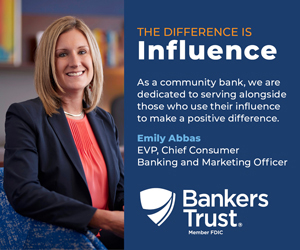Consortium targets chronic diseases

An innovative statewide program to assist elderly Iowans in monitoring their chronic diseases has the potential to create major savings – and beneficial changes – for Iowa’s health-care system.
The Iowa Chronic Care Consortium, a public-private partnership coordinated by Des Moines University, recently launched a statewide project to demonstrate the effectiveness of a telemonitoring program for chronic conditions, starting with diabetes and congestive heart failure. The project’s goal is to reach 1,000 patients within the next two years.
By monitoring people with conditions like diabetes and heart disease at home, costly hospitalizations can be avoided, and they can live a longer, healthier life, said William K. Appelgate, DMU’s vice president for advancement and planning and the consortium’s executive director.
“The genesis really comes from the fact we have a good deal of chronic disease in this country, and we spend a lot of money on them,” he said.
The consortium has already secured significant partners, among them Mercy Health Network, Iowa Health System, Wellmark Blue Cross and Blue Shield and the Iowa Farm Bureau Federation, which sponsors the state’s largest health plan in terms of membership.
Through the program, patients in 34 rural and urban counties will be contacted daily through 24 programs, each using various automated systems that will assist them in monitoring their conditions. In Polk County, for instance, selected heart patients will use an electronic telemonitor that measures their vital signs. The programs also reach into rural regions across the state, from Elkader to Onawa.
“We’re attempting to take the best health care can offer, and take it to places that are the least likely to get it,” Appelgate said. “We have to take it to the people; we can’t wait for them to come to us.”
The program fills a critical gap in care for the state’s rural, elderly population. Eleven percent of Iowans live on farms, and 41 percent live in towns of less than 2,500 residents. The state also has the highest percentage of residents age 85 or older in the nation. Though treatment for chronic diseases accounts for about 70 percent of health care costs, little attention is paid to chronic disease management because there are no standardized ways to deliver the care, nor does insurance pay for it. “So there’s no incentive to do it,” Appelgate said.
Cost savings from improved management of chronic diseases can be significant. A recent demonstration project completed by Mercy Health Network estimated total savings of about $1 million from avoided hospitalization and post-hospitalization office visits from a telemonitoring program that involved 182 patients. The hospital’s cost for the program was $25,000.
Currently, the consortium has about $1 million in funding, including $150,000 appropriated by the Legislature earlier this year. That state funding leveraged $600,000 in federal dollars for the program. Other money has come from private foundations. Because the telemonitoring programs save money, they have the potential to be self-supporting.
“The protocols will be self-sustaining because the private sector will adopt them,” said David Lyons, business development director for Iowa Farm Bureau Federation. The health plan Wellmark offers Farm Bureau members covers more than 110,000 people in Iowa.
“We find that about 30 percent of the cost of our health plan comes from about 1 percent of our members,” Lyons said. “Those are primarily members with chronic disease costs. We’re very interested in how much chronic disease costs are driving health care.”
Currently, chronic disease management isn’t done well by many health organizations, and their efforts in this area are restricted to particular employer groups or hospitals, he said. “We needed a system that would be available no matter where you lived,” Lyons said.
Wellmark is now identifying qualifying Farm Bureau members and enrolling them in the telemonitoring program. Wellmark will track the outcomes to assist the federation in redesigning its health policies.
“I’m very excited about the level of participation in this,” Lyons said. “You’re seeing that broad range of players, so if we put our minds to it and say, ‘This is good,’ it will get implemented.”
As part of the demonstration project, the consortium is also designing reimbursement models for chronic disease management, Appelgate said, by setting up risk pools.
“It’s really setting aside money, investing money to pay for chronic disease management, based on the prospective returns that may accrue to the investors,” he said. Those investors include the health plans, employers and patients.
The overall goal, Appelgate said, is to create a compelling model for health plans to become involved and begin reimbursing for chronic disease management.
“A big area for change is bringing the health plans in on this,” he said. “We’re trying to create a model of benefit that’s compelling to make chronic disease management regular, and reimbursed.”







